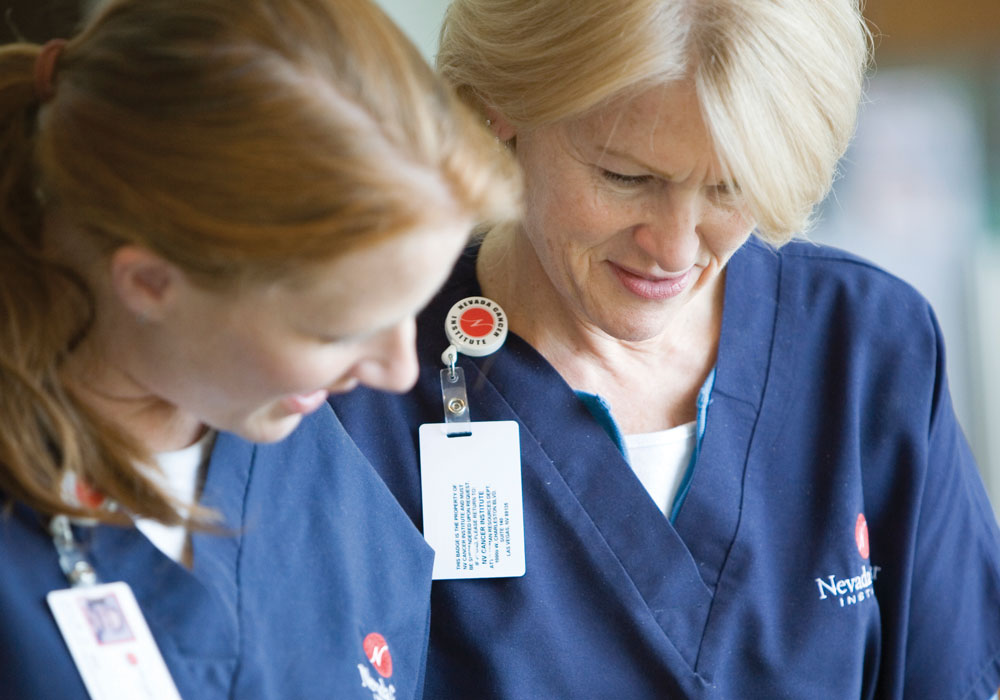Nurses can attain several levels of practice leadership to grow their professional development, including the clinical nurse specialist (CNS) and the clinical nurse leader (CNL). However, both roles are very different in their daily duties and responsibilities. Nancy Froggatt, MN, RN, CNL, of the Froedtert Hospital in Milwaukee, WI, and Lenise Taylor, MN, RN, AOCNS®, BMTCN®, of the Seattle Cancer Care Alliance and the University of Washington Medical Center in Seattle, WA, provided advice on the CNS and CNL roles and how to assess which might be best for your career.
What’s a CNL?
The CNL role was developed by the American Association of Colleges of Nursing (AACN) in collaboration with leaders from healthcare practice and education. CNLs are a clinical leader at the point of care focusing on care coordination, and their role includes the following:
- Care coordination
- Outcomes measurement
- Transitions of care
- Interprofessional communication and team leadership
- Risk assessment
- Implementation of best practices based on evidence
- Quality improvement
To prepare to become a CNL, you must have a master’s degree, advanced coursework in the “three Ps” (physical assessment, pathophysiology, and pharmacy), and a minimum of 400 clinical hours. A day in the life of a CNL generally has two parts: a practice focus and work on programs and departments.
Practice duties might consist of chart reviews (e.g., new admissions and previous day follow-ups), multidisciplinary rounds, and weekly or monthly meetings. Duties related to programs and departments generally consist of unit meetings, care coordination rounds, educational offerings, house-wide meetings, program meetings, and reviewing scheduled admissions.
What’s a CNS?
The CNS provides direct care to patients in one of a range of specialties. To become a CNS, you must complete an accredited graduate-level program that prepares a nurse as a CNS in a defined specialty. Some of these specialties include pediatrics, geriatrics, emergency care, and oncology.
CNSs are qualified to independently do the following:
- Function as an expert clinician and patient advocate (e.g., patient, family)
- Lead advancement of nursing practice (e.g., nursing, nursing practice)
- Identify opportunities for and lead organizational and system change (e.g., organizations, systems)
To prepare to become a CNS, you must have a master’s degree, advanced coursework in the “three Ps” (physical assessment, pathophysiology, and pharmacy), and a minimum of 500 clinical hours.
A day in the life of the CNS is often focused on meetings with stakeholders, quality (e.g., event reviews, product reviews), staff discussions, evidence-based practice work (e.g., literature reviews, policy updates, education), program management, and information technology (e.g., nursing documentation, physician orders). “A lot of my time is in meetings or
around the nurse area, so they can ask questions,” Taylor said.
Shared Role Responsibilities of the CNS and CNL
CNL and CNS roles share the following similarities:
- Advanced clinicians • Patient advocates
- Versed in comprehensive and holistic care
- Work with all levels of care and all types of healthcare settings
- Staff mentors
Within the realm of patient outcomes, CNLs and CNSs translate nursing research into clinical practice, use evidence-based practice, participate in policy development, and coordinate with the multidisciplinary team. If you’re still not sure which role is right for you, ask for shadowing experiences with a CNL and a CNS outside the clinical environment so you can understand and get more information on which is the best fit.






